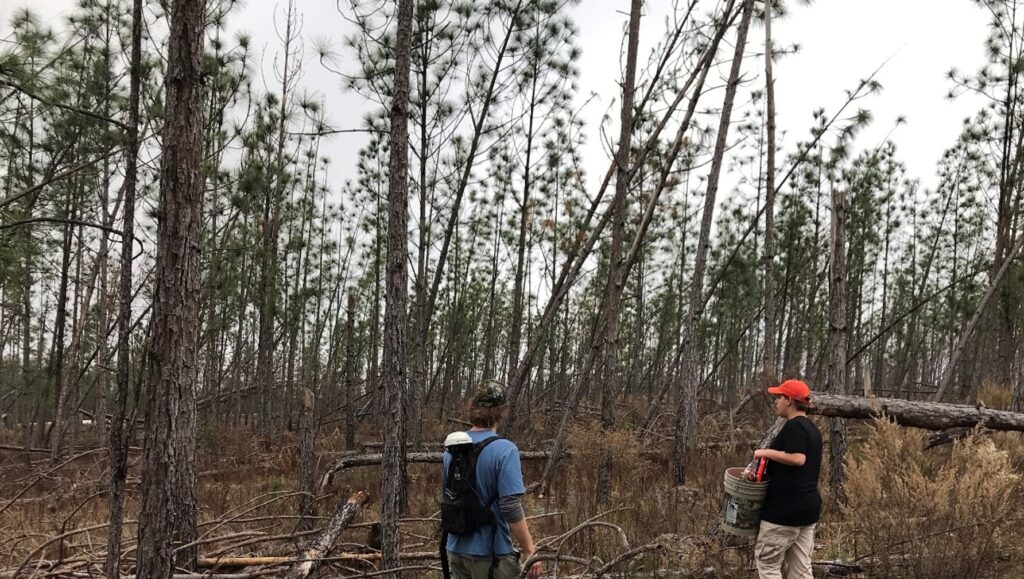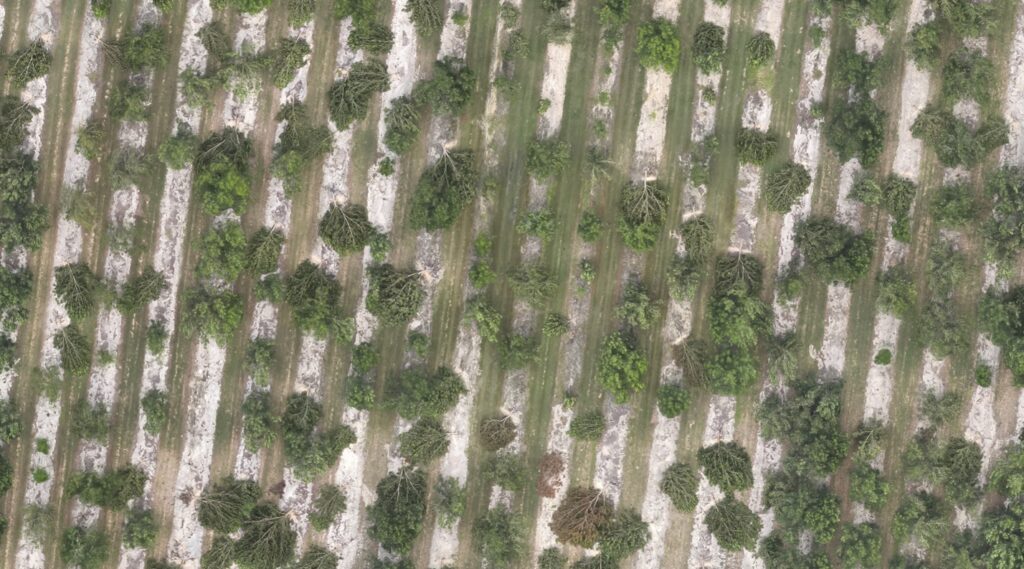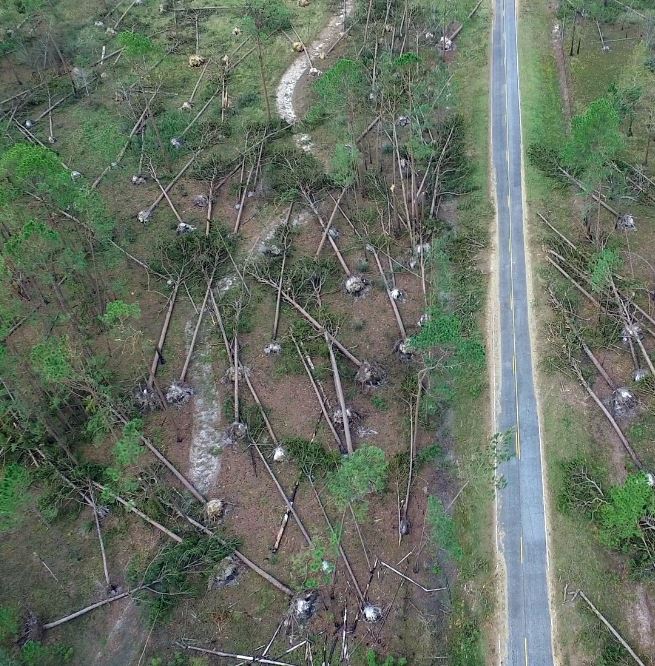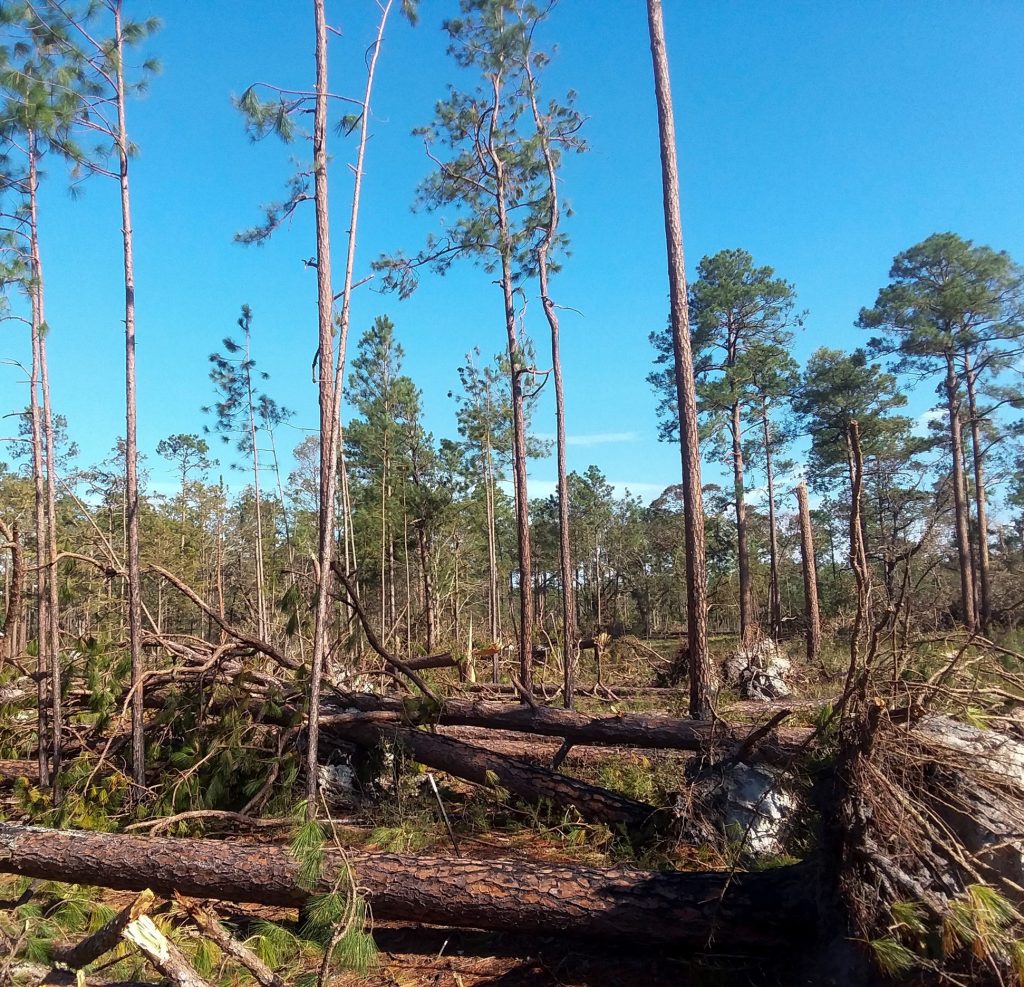New study: Protecting planted longleaf pine from severe winds

Planted stands of longleaf pine contribute to landscape-scale restoration of the ecosystem and the imperiled species it harbors. Yet frequent severe winds from hurricanes occur throughout its range. We surveyed planted stands of longleaf pine in the aftermath of Hurricane Michael. We found that damage increased with forest fragmentation and stands with increased taper were most resistant
New grant aims to mitigate hurricane risk to pecan orchards

In a new grant funded by the Natural Resources Conservation service, the Landscape Ecology lab will collaborate with UGA pecan expert Dr. Lenny Wells to address concerns of pecan growers state-wide. Following widespread hurricane damage in the region, this project aims to understand the major drivers of hurricane damage, and make recommendations for hurricane preparedness.
New study: Patterns of hurricane gaps in a longleaf pine landscape

Ecological approaches to forestry seek to emulate aspects of natural disturbances like hurricanes which are a common disturbance in longleaf pine forets. This study used airborne lidar to measure patterns of hurricane-created gaps to offer guidance for application of natural disturbance-based management in landscapes dominated by longleaf pine.
New study: Longleaf pine resilience after Hurricane Michael

A new study led by University of Florida and Landscape Ecology lab alumnus Cody Pope was published in the journal Forest Ecology and Management. The study examined growth of longleaf pine and associated oak saplings for 2 years after hurricane Michael, and found that canopy removal may benefit longleaf pine over competing oak species, indicating that hurricanes may reinforce and stabilize longleaf pine dominace in frequent-fire forests.